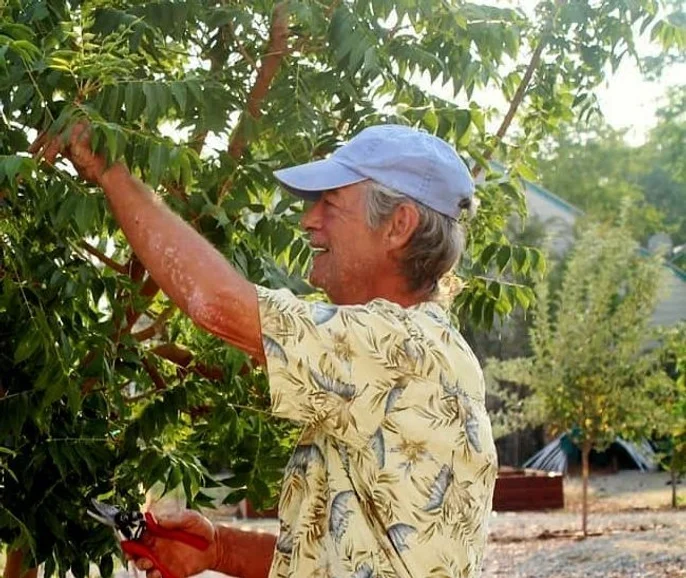Mission Statement
Care for the Earth, Care for the People, Share the Bounty. Marion Shaw Greenscape Designer installs and designs low-maintenance, eco-friendly landscapes, using perennial fruits, vegetables, and native trees and shrubs to create self-pollinating edible landscapes. We offer homeowners an environmentally friendly alternative to traditional, high-maintenance, chemical-dependent landscaping. Our clients are aware of the importance of promoting food security, protecting the environment, and conserving natural resources. Using native plants in combination with perennial edible trees and shrubs is mutually beneficial, attracting native pollinators and beneficial insects. This companion planting technique saves water and improves soil biology, constantly improving growing conditions for all plants.
My Story

Working with nature to promote a more sustainable and productive environment, I design and install food forests, and native and edible landscapes on urban properties. Our Garden Designer, Marion, grew up in a farming family with large organic gardens. He found landscaping a natural fit and has been playing in the dirt ever since. In the early 1970s, he worked in southern California and became aware of the importance of conserving irrigation water. Marion has designed and installed dozens of foodscapes in the arid climates of Arizona and California focusing on water conservation and the use of edible and native plants in home landscapes. We create custom installations that are environmentally friendly and require low maintenance and low water usage. Each custom installation uses native and beneficial plants and water-wise irrigation.
Consider This.
We only have one planet. It gives us life and beauty. Our goal is to respect and nurture the earth, this is reflected in the design and installation of your landscape. We specialize in repurposing wasteful lawns to create food-producing landscapes that are beautiful and eco-friendly. Creating plant guilds with similar water requirements maximizes resources, conserves water, and saves money for the client. Our clients are homeowners who are concerned with the environment and food security for their families.
Food for thought!
The American lawn is the largest consumer of water for any crop. The lawn also uses millions of tons of chemical fertilizers, creates pollution from power equipment, and has expensive maintenance. By converting lawns to gardens you can create your own environmentally friendly food forest that is beautiful and functional. Growing up with organic gardeners gives you an appreciation for what fruits and vegetables should taste like. No store-bought tomatoes (even organic) seem to have the same flavor as ones you pick from your garden, only the farmers' markets can compare. Using age-old practices and some innovations gives the home gardener an abundance of choices and rewards for the effort it takes to grow and maintain a sustainable food source. By using perennial fruits and vegetables in a landscape you can look forward to years of production from the same plants. As the seasons allow annuals to complete and complement the process giving you multiple uses in more compact spaces. We promote the Keyhole Garden style of planting for water conservation efficiency and the abundance of production in a compact space. By raising the bed and building the compost bin in the middle, you will create a self-fertilizing garden every time you water. How cool is that?
Certifications
| Soil Health | Cornell University |
| Smartscape Irrigation | University of Arizona |
| Master Gardener | University of California, Davis |
| Vegetable Gardening Standalone | University of Oregon |
| Citizen Science: From Soil To Sky | University of Dundee |
| Deciding Where to Farm in the City | Cornell University |
Traditional landscape companies typically use high maintenance, ornamental plants, and repetitive designs, to ensure the repetitive business of mowing, pruning, fertilizing, and pest control. They use toxic chemical fertilizers and pesticide treatments to force growth, bloom, and insect control, decimating pollinators and songbirds in their wake. By incorporating natives and beneficial plants, the landscape takes care of itself once established.